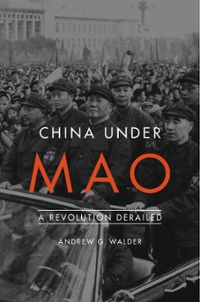.............
4 FDIC and risk behavior Consider a person with an income of w : 10, 000. There are two states: in state 1, the person receives the entire 10,000, and in state 2, the person suffers an accident and incurs a loss L : 6400. The person's utility for money is given by u(t'ncome) : V income. 4.1 Calculate this person's expected utility, assuming that the probability of a loss is 1/2. 4.2 Now suppose that, at a cost of 1900, which must be paid no matter what the state, the person could reduce the probability of a loss to 1/10. For example, the person may install smoke alarms that make a catastrophic re less likely, install antilock brakes on her car, install a security system in her house, stop smoking or skydiving, and so on. Would the person pay the cost to reduce the risk of loss? To answer this question, you need to calculate and compare the relevant expected utilities. 4.3 Suppose now that, after paying the 1900 to reduce the risk of a loss, and hence ensuring the probabilities of state 1 and 2 are 9/10 and 1/10, respectively, an insurance company offers to pay the person a claim amount of C if state 2 occurs, in return for a premium P to be paid in both states 1 and 2. Assuming that the insurance company just breaks even on this contract, nd the values of O and P the company would be willing to offer to the person. Write the person's budget constraint given this insurance policy. Find the optimal consumption bundle for the person. Calculate the person's expected utility. 4.4 Now suppose that before accepting the insurance policy, the person can decide whether to spend the 1900 to reduce the probability of a loss. The insurance company cannot observe whether the lossprevention has been undertaken or not. (The insurance company may not be able to tell whether the person has really stopped smoking, for example.) Suppose that whatever the person does, the insurance company believes the risk has been reduced, and hence oers the contract described in 4.3. Will the person reduce the risk in this case? Answer this by calculating the person's expected utility, given that she does pay the cost to reduce the risk and then assuming that she does not, in each case having available the insurance contract from 4.3. If the person does not reduce the risk, will the company be willing to offer this policy? 45 Insurance companies often write policies with a deductible provision. A de ductible essentially caps the amount of the claim 0 the insurance company will pay, forcing the person to bear some of the loss. In light of your previous an swers, explain briefly why insurance companies might nd it best to include a deductible provision in their insurance policies. Now we consider some implications of risk attitudes for investing. Consider a collection of investors whose preferences are represented by the expected utility function U(:U1,3:2) = 7T1\\/131 + 7T2\\/JE2. These investors each place 100 into a fund. The manager of the fund has the opportunity to place each 100 in capital into one of two lotteries (often called in one of two assets). One lottery gives payoo 64 with probability 1/2 and payoff 225 with probability 1/2. The other gives payoff 0 with probability 3/4 and payo 1024 with probability 1/4. The manager of the fund is scrupulously concerned with the expected utilities of the investors, and always invests in the lottery that gives the investors the highest expected utility. 4.6 Which lottery gives an investor the highest expected utility? How do the expected utilities of the two lotteries compare to the utility an investor would receive if she simply consumed her initial 100? 4.7 Now suppose the federal government is concerned that sometimes investors lose money. As a result, the government institutes an insurance scheme that re imburses investors for any losses they incur, up to a total reimbursement of 36. What expected utility do the investors now receive in each lottery? Which lottery will the manager choose? Are the investors better or worse off with the insurance scheme? 4.8 For each of the lotteries in the preceding question, calculate the actuarially fair premium for the insurance offered by the government. Suppose the investors had to pay this premium. Which lottery would they choose









